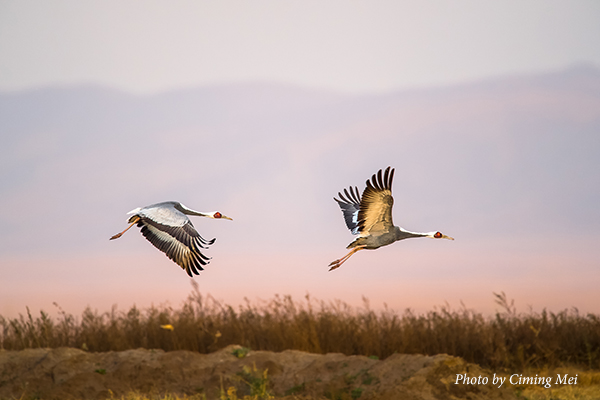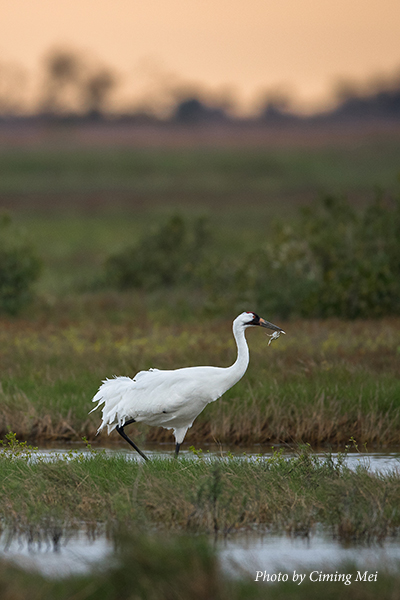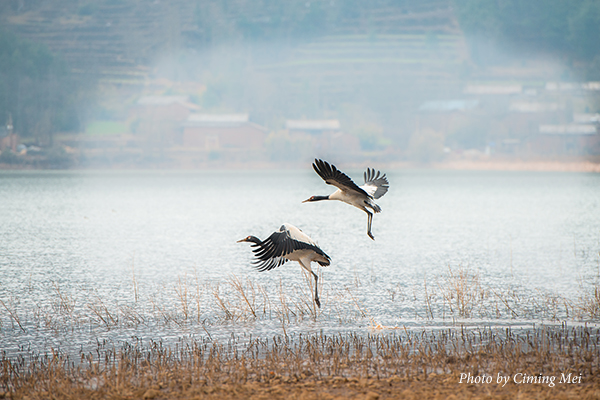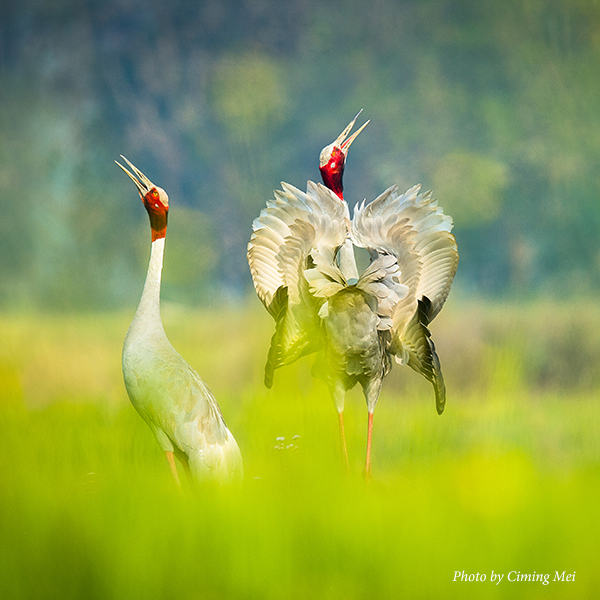
But We Can Learn From Decades of Successful Crane Conservation
• 4,550 Critically Endangered Siberian Cranes in China, the highest count ever recorded.
• 3,500 acres of invasive shrubs cleared from the Kafue Flats, Africa’s most important wetland for Wattled Cranes and many other species.
• 30 years of conservation impact in Southeast Asia, leading to six new protected areas to secure Sarus Cranes and better livelihoods for the people who depend on these wetlands.
• 667 Whooping Cranes in the wild – continuing their remarkable comeback from as few as 21 in the wild in the 1950s.
I love sharing numbers like these from our latest annual report, inspiring numbers reflecting the positive impact we achieve together, to save cranes and the beautiful places where cranes dance — places that sustain abundant wildlife and people.
But this past year has revealed some very alarming numbers, too:
3 billion breeding birds lost from North America in the past 50 years — with massive declines for common as well as rare species of sparrows, warblers, and many others (view the full article in the journal Science).
2.2 million acres of Amazon rainforest burned down, home to one in ten of every known species on Earth.
More than 400 parts per million of carbon dioxide in our atmosphere, far surpassing the level of greenhouse gases that climate scientists agree is too high for our rapidly warming planet.
These are staggering numbers for all who care about the diversity of life. More than 7.7 billion people now share our finite planet, and the need for sustainable pathways to our land, water, and livelihoods becomes more urgent each year.
But there are valuable lessons we have learned from 46 years of crane conservation, lessons that can give us hope and tools for a better future. As noted by Dr. Arvind Panjabi in the Science article, about massive bird declines, “When we’ve invested to combat declines for a particular group of birds, we’ve succeeded.” Why did Bald Eagles, Trumpeter Swans, and Whooping Cranes increase while so many other species declined? Because people committed to their future.

The remarkable recovery of the Endangered Whooping Crane shows us that we can bring back species from the brink of extinction — when we all work together for a common goal. But it is a cautionary lesson, too, because the recovery also teaches us that it is enormously challenging and expensive to reintroduce species that are lost from the wild — as evidenced by our efforts to restore the migratory Whooping Crane population that was lost to the Eastern U.S. more than a century ago. It is much more cost-effective and successful to protect species in the wild in the first place.
We’ve learned that big, beautiful, charismatic species like cranes can play a vital role in helping us secure ecosystems that sustain many lesser-known species that also need our help. Worldwide, cranes have proven to be remarkable flagships for wetland conservation (wetlands are the only ecosystem in which bird populations did not decline over the past 50 years), and cranes can help raise awareness about the loss of grasslands too, where we have suffered our most significant decline in bird populations.
Consider the Sarus Crane, the world’s tallest flying bird and a sacred species across its range in South and Southeast Asia. In Vietnam and Cambodia, Sarus Crane conservation led to the protection of the last remaining wetlands and grasslands of the Mekong Delta, creating a new safe haven for many threatened species.

Cranes teach us important lessons about the risks of climate change — and why we should care and take action. In Texas, rising seas and frequent droughts threaten the coastal marshes used by Whooping Cranes. In Asia, melting polar regions submerge the arctic marshes where Siberian Cranes breed while retreating glaciers no longer feed water to the high-altitude wetlands that support Black-necked Cranes. In Africa, reduced water inflows and increased evaporation lead to water stress, fires, and invasive species that threaten Wattled Cranes, Grey Crowned Cranes, and other wetland life. We don’t know if climate change will drive any of these species to the brink of extinction — but for every crane species, on five continents, the risks are very high.
Shouldn’t we apply the same principles of risk management that we apply to our businesses? Shouldn’t we forecast and evaluate risks, and identify ways to avoid or minimize their impact on our most precious biodiversity?

Cranes also teach us about the conservation of abundance. More than 90,000 Sandhill Cranes now breed across the eastern U.S., where we nearly lost them a century ago. We are grateful to the farmers, hunters, and wetland lovers who committed to their recovery. But abundance cannot be taken for granted, as we learned from the extinction of the Passenger Pigeon, once the most abundant bird in North America. We’re reminded of this again in the new Science study about the steep decline since 1970 of many abundant bird species. Abundance requires a new set of conservation tools. We are working to ensure that cranes are living in harmony with farmers by developing a deterrent to crop depredation by cranes. We must make sure that the zeal to hunt Sandhill Cranes, or the poor placement of power lines they often collide with, does not damage their storied recovery. And we must be wary that more frequent and prolonged droughts in the changing climate of the western U.S. could quickly reverse the fortunes of Sandhill Cranes and many other birds.
The challenges we face are daunting, but we can learn from success and deepen our impact. Thank you for supporting our efforts to combat the global decline in birds, the loss of their precious habitats, and the impacts of climate change. When we care enough to engage and act, we can make a real difference for cranes and all life on Earth.
 Story submitted by Rich Beilfuss, President and CEO. Click here to learn more about our global programs.
Story submitted by Rich Beilfuss, President and CEO. Click here to learn more about our global programs.
